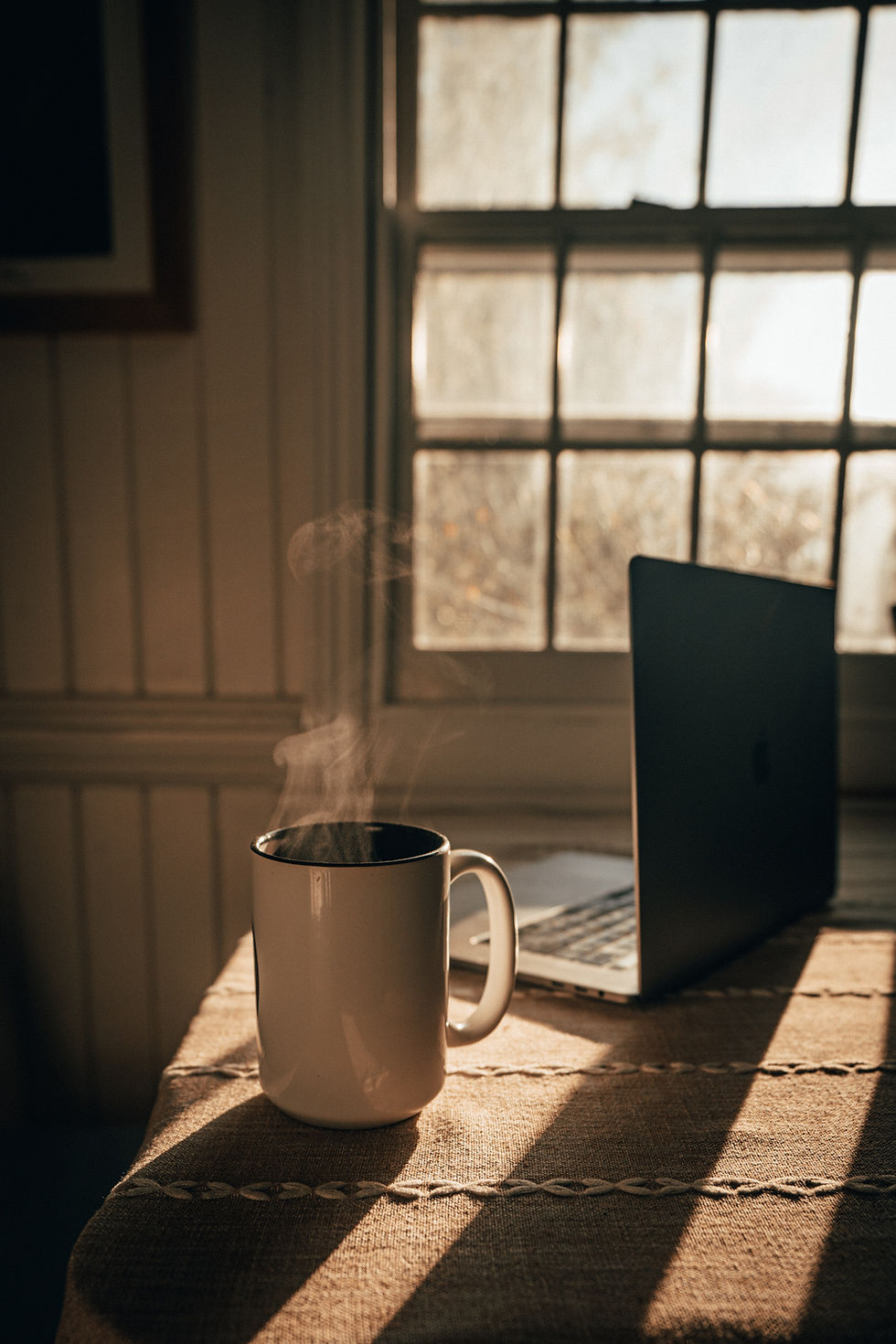What Progress in Therapy Really Looks Like (Small Steps That Matter)
- LPerry

- Oct 19
- 4 min read
Lianne Perry, MA, MSc., RCC

One of the most common questions people ask themselves a few weeks or months into therapy is, “Am I actually getting anywhere?”
It’s a fair question. Many people arrive with a quiet hope for a clear before and after moment, as if healing happens like a big reveal on a renovation show. In reality, therapy is far less dramatic and far more meaningful. Progress often shows up in subtle ways that don’t make headlines, but over time, those small shifts add up to something life changing.
Here’s what progress often looks like in real life, even if it doesn’t always feel obvious.
1. Shifts in Awareness (Even If Nothing Looks Different Yet)
One of the earliest signs of progress is noticing your thoughts, feelings, and patterns more clearly. You might catch yourself thinking, “Oh, there it is again. That old story I tell myself when I feel rejected”.
This kind of awareness doesn’t always come with fireworks, but it matters. Think of it like turning the lights on in a room that’s been dim for years. You can’t change what you can’t see. By shining a light on your inner landscape, therapy helps you make conscious choices instead of being driven by automatic reactions.
EMDR and IFS can be especially powerful here. With EMDR, for example, clients often notice a little more space between the trigger and their response. With IFS, people begin to identify different “parts” of themselves and understand why those parts show up. That insight alone can start to shift everything.

2. Subtle Nervous System Changes
Progress doesn’t always show up in words. Sometimes it shows up in your body. You might notice that situations that once sent your heart racing now feel slightly more manageable. Or maybe your shoulders aren’t permanently glued to your ears anymore.
These shifts often happen gradually, almost under the radar. The brain and nervous system are learning that the world is safer, that you can handle discomfort, and that you don’t have to stay in survival mode all the time.
In trauma therapy, this might look like being able to recall a difficult memory with less emotional charge, or simply being able to stay present during a tough conversation rather than shutting down. These are quiet, powerful signs of healing.
3. New Ways of Responding
Another sign of progress is when you start to respond rather than react. Maybe you pause before sending that text. Maybe you speak up about a boundary instead of avoiding the situation altogether. Maybe you give yourself compassion when you stumble, instead of piling on shame.
These moments might feel small, but they represent deep change. Therapy isn’t about never being triggered again or becoming some perfectly calm version of yourself. It’s about having more choice in how you navigate life.
4. Feeling “Stuck” Differently
Ironically, feeling stuck can be a sign of progress too. Early in therapy, feeling stuck might mean you’re looping through the same patterns without any awareness. Later on, it might mean you’re aware of the pattern but haven’t quite figured out how to change it yet.
This in-between stage can feel frustrating, but it’s actually where a lot of growth happens. It’s the space between old habits and new possibilities. With support, this is often the point where people break through long-standing patterns.
5. Gentle Shifts in Self-Talk
Listen closely to how you talk to yourself. Over time, therapy often softens that inner voice. Where there used to be constant criticism, you might start hearing curiosity. Instead of “What’s wrong with me?” it might become “What’s going on for me right now?”
These micro shifts in self-talk are powerful. They change how you relate to yourself, which in turn changes how you relate to others and the world. Healing doesn’t always announce itself loudly. Sometimes it whispers.
6. A Greater Capacity for the Hard Stuff
Progress doesn’t mean life stops being hard. But it does mean your capacity to handle it grows. You might find yourself able to stay present in a tough conversation, to soothe yourself after a hard day, or to reach out for support instead of retreating.
This capacity building is one of the most meaningful outcomes of therapy. It means your nervous system, mind, and heart are learning to move through the world in new ways. And that’s the kind of progress that lasts.
7. Setbacks Become Part of the Process, Not the End of It
One of the biggest signs of growth is how you handle setbacks. Instead of seeing a tough week as proof that you’ve “failed” therapy, you begin to understand that healing is nonlinear. You have ups and downs, forward leaps and pauses, and sometimes loops.
In EMDR work, for example, people often describe periods of integration where things feel messy or unsettled. That’s not regression. It’s your brain doing deep work. Learning to trust the process, even when it’s not neat, is part of real progress.
Celebrating the Small Wins
We live in a culture that loves big transformations and overnight results. But in therapy, the real magic happens in the small, consistent shifts. The moment you take a deep breath instead of spiralling. The time you ask for what you need. The day you notice that the pain doesn’t feel quite as sharp as it once did.
These moments may not make headlines, but they are the building blocks of lasting change. Just like a garden doesn’t bloom overnight, healing unfolds in its own time, often quietly and steadily.
Joey’s Take 🐾
Joey’s take on therapy progress: One chew at a time, my friends. You don’t finish a good stick in one bite. You settle in, keep at it, and suddenly… you’re down to the best crunchy middle.

About Lianne
I’m Lianne Perry, a Registered Clinical Counsellor in BC who works online with clients across Canada. I specialize in trauma, anxiety, and life transitions, and I’m certified in EMDR, a powerful approach that helps people heal without having to relive every detail of the past. My sessions are grounded, collaborative, and often a mix of talk therapy and practical tools. When I’m not in session, you’ll probably find me hiking with my Aussie, Joey, or sitting by the ocean (my favourite co-therapist).




Comments